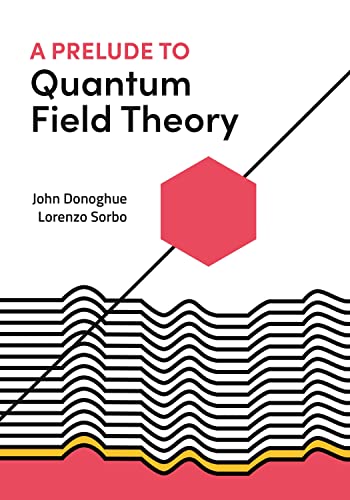

A Prelude to Quantum Field Theory
B**R
Not for Kindle Paperwhite.
The content is terrific. The problem is the claim that it is Kindle Paperwhite compatible. All the superscripts and subscripts appear as normal text. This makes equations difficult to decipher.
P**D
Good, but significant shortcomings
My colleagues will tell you that I've been griping for years that we need to redo how we teach quantum field theory, and that a better approach is to teach it like we do quantum mechanics: typically, a short introductory course to get the ideas and some basic examples on the table, and then return to it later for more mathematical rigor and depth. That approach is the authors' goal in this textbook, and they make an admirable effort. Nonetheless, there are some significant shortcomings, which I hope will be addressed in future revisions.First, the good: the authors do a good job of paring down both the mathematical sophistication and topics to focus on understanding some basic examples. Just like intro quantum mechanics introduces the Schrodinger equation and leaves Hilbert spaces for future study, you won't find Fock spaces mentioned in this book. The quantization approach (instead of the path integral approach) is a good choice here, I think. (The way the path integral approach is introduced later allows for future study to start with it, like in Zee's book.) Fermions, likewise, are mentioned only in passing, allowing students to understand the easier bosonic scenario more fully. In terms of topics & mathematical depth, I think the authors put together a great book for an introductory, prepatory, course.Now the weaknesses: first, and perhaps most unfortunate, I think the connection between quantum field theory and quantum mechanics is a bit weak (and confusing for most students). While as a practicing physicist I agree with the authors that "In quantum mechanics the only important things are the amplitudes", that might be news to an advanced undergrad/grad student for whom a substantial part of the QM curriculum is finding eigenvalues and eigenstates.To give a more concrete example, although a QM wavefunction is derived, its interpretation isn't discussed. (In fact, the chapter connecting QFT to QM ducks any explicit discussion of probabilities at all...) Two pages later, the authors introduce different normalizations, treating it as obvious that this is just a convention. Of course, in quantum mechanics the normalization isn't arbitrary- it's set by requiring the probabilities to sum to one. I imagine most students will be left wondering: Should I interpret this wavefunction as a probability density? If so, why is the normalization arbitrary? How do I get probabilities from it, if the normalization isn't meaningful? Etc.The terse explanations also detract from other other sections. In the section on the non-relativistic limit, the lack of particle production is condensed to a single sentence, which gestures at energy conservation and only mentioned antiparticles. (The terseness also means at times QFT jargon leaks in before it's been explained.)In summary: a good book for a much-needed purpose, but with some significant shortcomings. If I ever convince my colleagues to let me teach such a class I'll probably use it, but with substantial supplemental notes.
Trustpilot
2 weeks ago
2 weeks ago